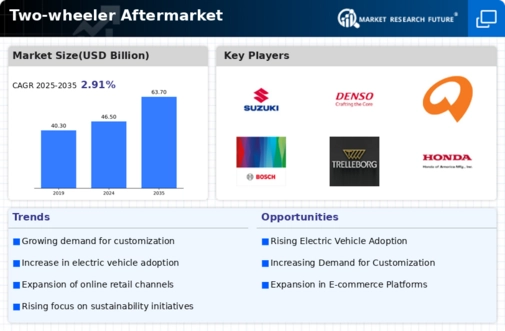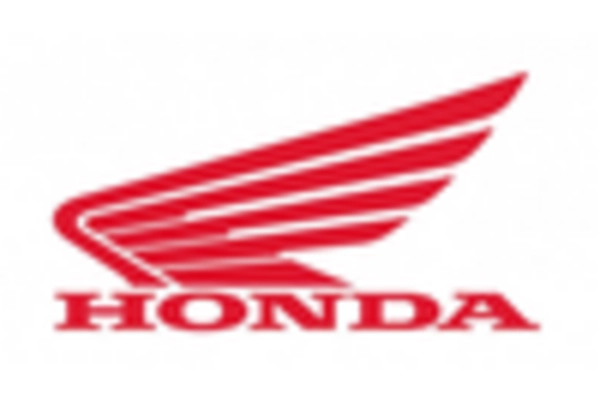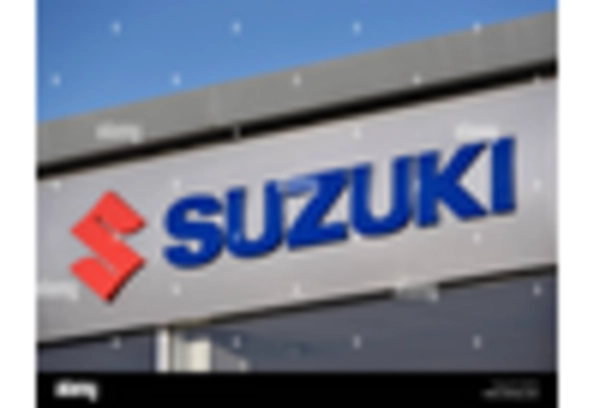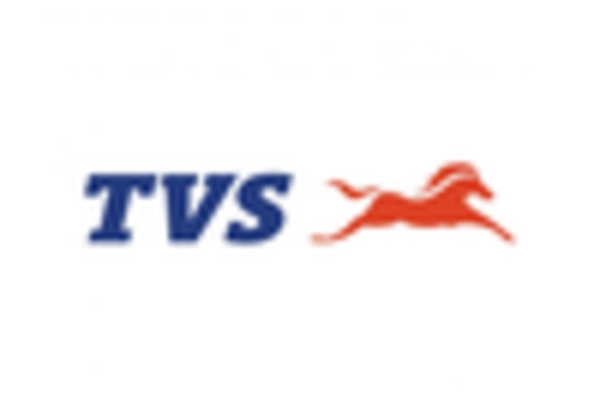Growth of Online Retail Platforms
The expansion of online retail platforms is transforming the Two-wheeler Aftermarket Industry. With the rise of e-commerce, consumers are increasingly turning to online channels for purchasing parts and accessories. In 2025, online sales in the aftermarket sector are expected to grow by approximately 40 percent, driven by convenience and competitive pricing. This shift compels traditional retailers to adapt their business models to include online sales strategies. Additionally, the Two-wheeler Aftermarket Industry must focus on enhancing the online shopping experience, ensuring that customers can easily find and purchase the products they need. As a result, businesses that effectively leverage e-commerce will likely gain a competitive edge in the market.
Rising Demand for Electric Two-Wheelers
The increasing demand for electric two-wheelers is reshaping the Two-wheeler Aftermarket Industry. As consumers become more environmentally conscious, the shift towards electric vehicles is evident. In 2025, electric two-wheelers are projected to account for approximately 30 percent of total two-wheeler sales. This transition necessitates a corresponding evolution in the aftermarket sector, as new components and services tailored for electric models emerge. The Two-wheeler Aftermarket Industry must adapt to this trend by offering specialized parts, maintenance services, and charging solutions to meet the needs of electric vehicle owners. Furthermore, the growth of electric two-wheelers is likely to drive innovation in battery technology and related aftermarket services, creating new opportunities for businesses within the industry.
Customization and Personalization Trends
The desire for customization and personalization is increasingly shaping the Two-wheeler Aftermarket Industry. Consumers are seeking unique modifications to enhance the aesthetics and performance of their two-wheelers. In 2025, it is projected that the customization segment will account for a substantial portion of aftermarket sales, with a growth rate of around 20 percent. This trend encourages manufacturers and retailers to offer a wider range of customizable options, from performance upgrades to aesthetic enhancements. As consumers express their individuality through their vehicles, the Two-wheeler Aftermarket Industry must respond by providing diverse and innovative products that cater to these preferences, thereby fostering customer loyalty and engagement.
Increasing Focus on Safety and Compliance
The growing emphasis on safety and compliance is a critical driver for the Two-wheeler Aftermarket Industry. Regulatory bodies are implementing stricter safety standards for two-wheelers, which necessitates the availability of compliant aftermarket parts. In 2025, it is anticipated that the demand for safety-related components, such as helmets and protective gear, will rise significantly. This trend not only reflects consumer awareness but also highlights the importance of adhering to regulations. Consequently, businesses within the Two-wheeler Aftermarket Industry must prioritize the development and distribution of compliant products to meet these evolving safety standards, ensuring that they remain relevant and competitive.
Technological Advancements in Vehicle Maintenance
Technological advancements are significantly influencing the Two-wheeler Aftermarket Industry. The integration of smart technologies, such as IoT and AI, is enhancing vehicle maintenance and repair processes. For instance, predictive maintenance tools are becoming increasingly popular, allowing for timely interventions that can prevent costly repairs. In 2025, it is estimated that the adoption of smart maintenance solutions could increase by over 25 percent. This trend not only improves the efficiency of service providers but also enhances customer satisfaction. As consumers seek more reliable and efficient services, the Two-wheeler Aftermarket Industry must embrace these technological innovations to remain competitive and meet evolving consumer expectations.

















Leave a Comment